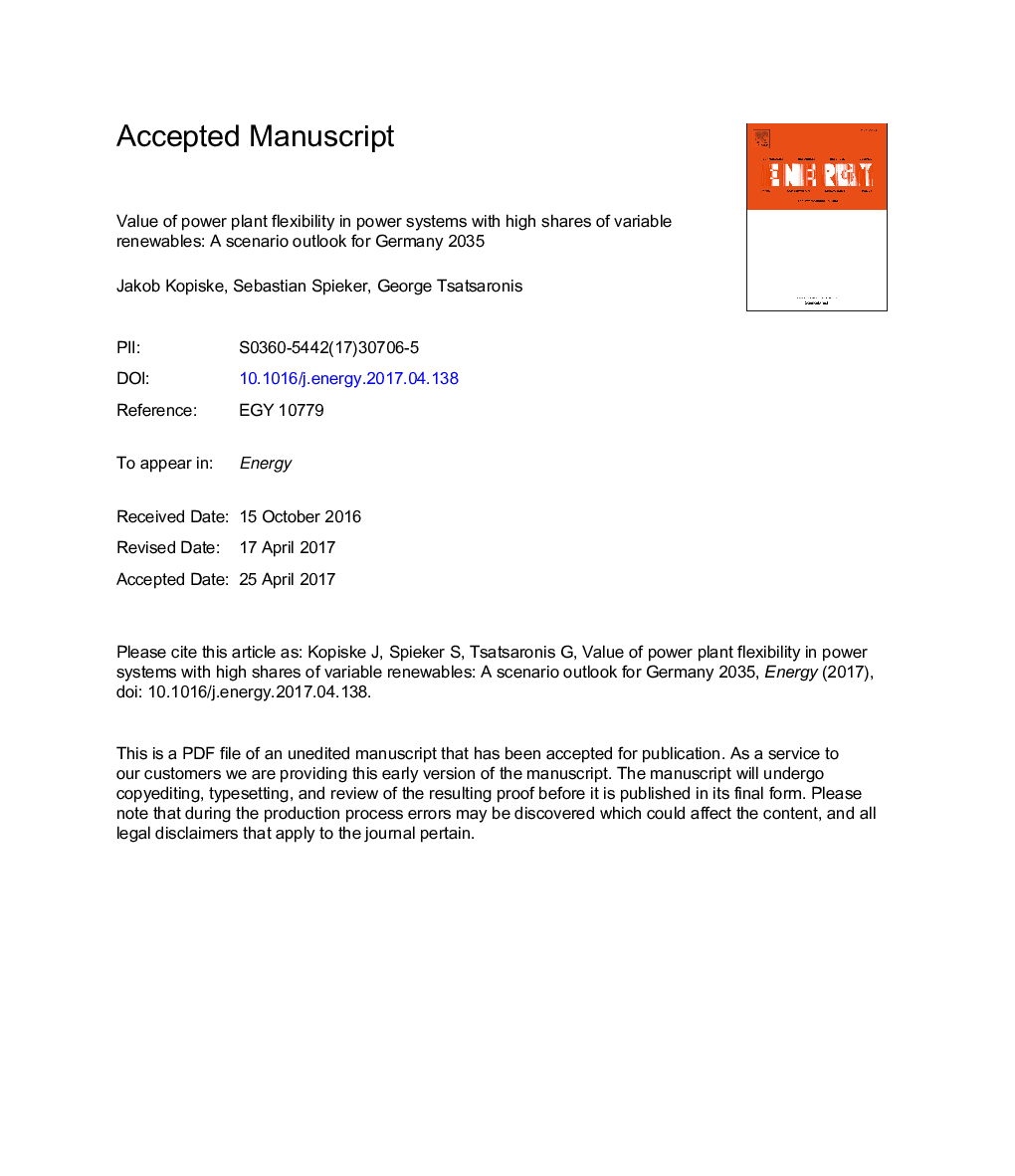| Article ID | Journal | Published Year | Pages | File Type |
|---|---|---|---|---|
| 8072794 | Energy | 2017 | 25 Pages |
Abstract
As part of the German transition towards a low-carbon economy, renewable energies are set to account for more than half of the gross electricity consumption by 2035, resulting in a rising flexibility demand. Flexibility is required to balance fluctuations in the residual load. In addition, uncertainties in the wind and solar power generation cause an increased demand for control reserve. A unit commitment model of the German power system is used to analyze the value of power plant flexibility in systems with high shares of variable renewables. To investigate the value of power plant flexibility, the additional revenue that can be generated by flexibility improvements is calculated. The results indicate, that power plant flexibility has a small positive impact on the power plant's contribution margin in 2014. A future power system configuration according to the German Grid Development Plan would provide sufficient flexibility to integrate high shares of renewables without power plant flexibility being very valuable. However, integrating variable renewables into a system relying on coal-fired and nuclear power stations results in power plants being able to significantly increase their revenue with improved flexibility. Under these circumstances, power plant flexibility has a considerable value.
Related Topics
Physical Sciences and Engineering
Energy
Energy (General)
Authors
Jakob Kopiske, Sebastian Spieker, George Tsatsaronis,
